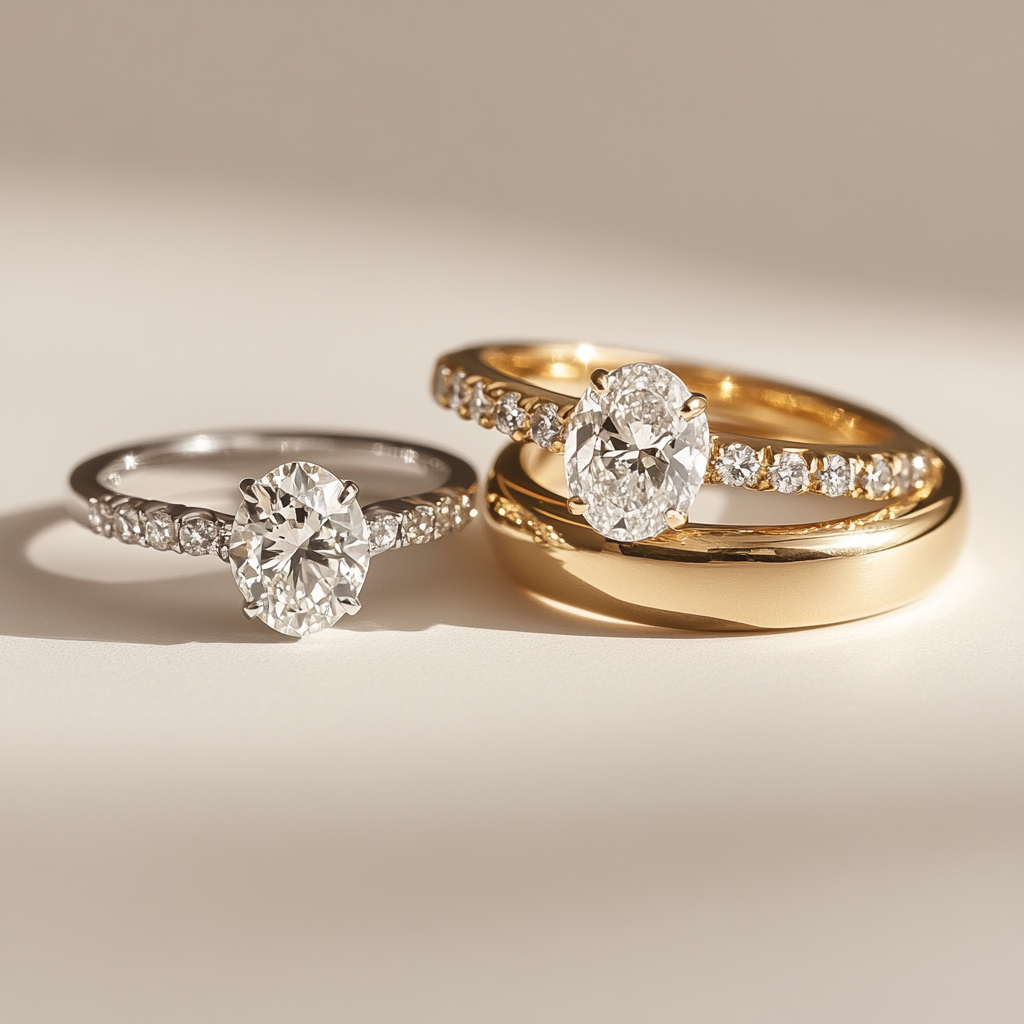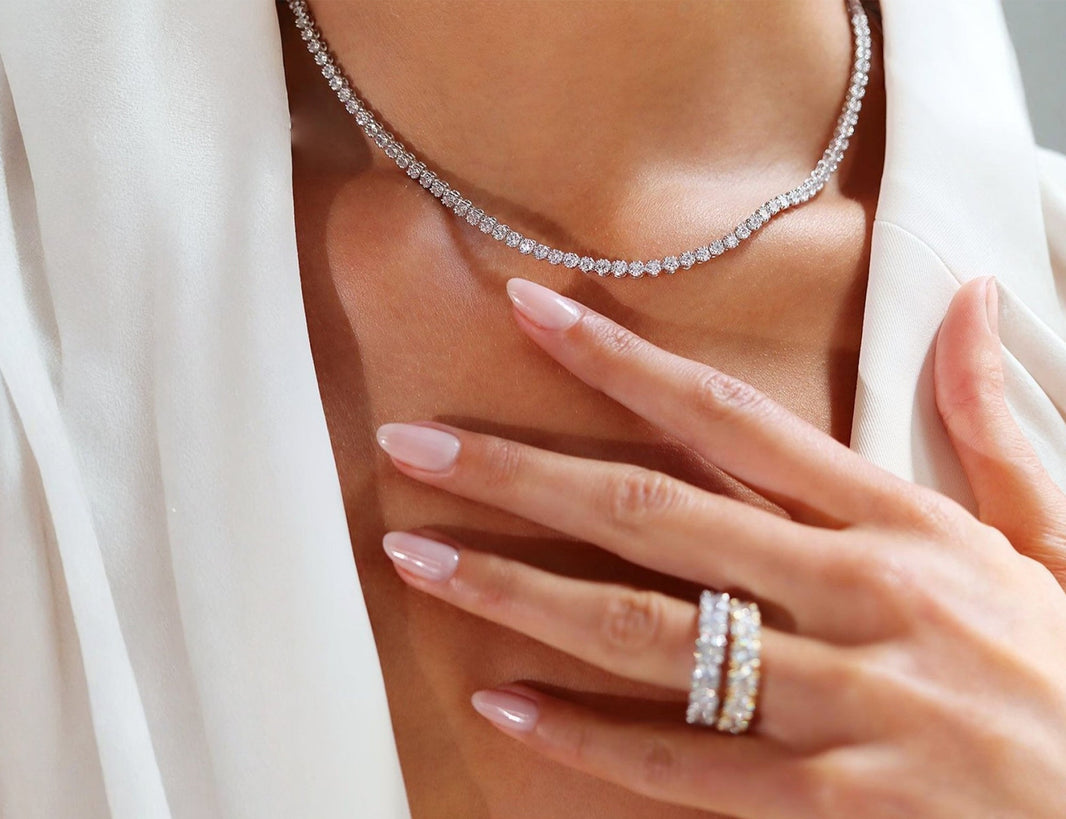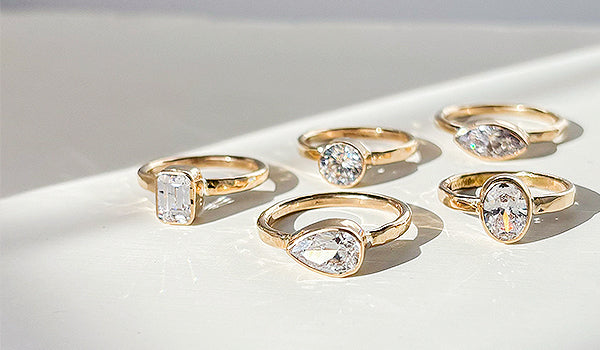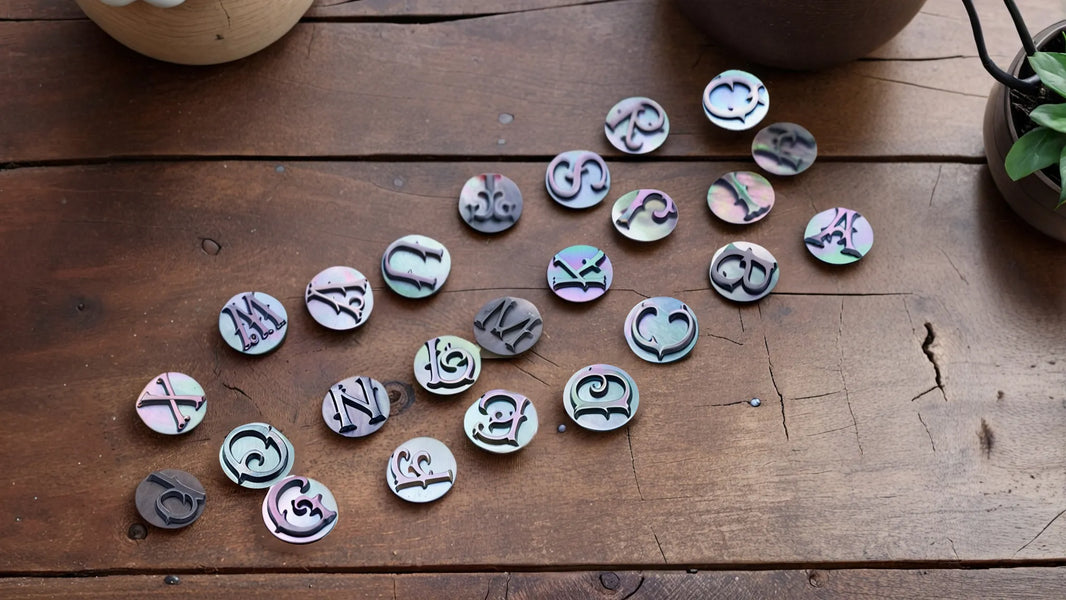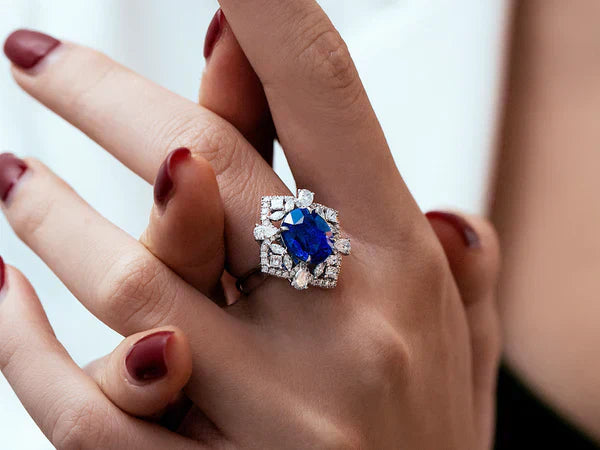Quick Answer
Yes, you can wear an emerald ring every day! Emeralds are strong stones that can handle daily life just fine. But they're not as tough as diamonds, so they need a little more care. Think of it like this: emeralds are ready for anything but prefer to skip the really rough activities. With some simple care and gentle handling, your emerald ring - whether it's a natural stone or a lab-grown emerald ring - can be your daily favorite for many years.
Introduction
So you're eyeing that stunning emerald ring but wondering if it's practical for everyday wear? Good news: emeralds can absolutely handle daily life, though they need a little more TLC than some other gems. They're not as tough as diamonds, but they're way stronger than most people think. All you need is some smart care habits to keep your emerald looking spectacular through everything life throws at it.

What Makes Emeralds Strong (And Where They Need Extra Care)
You might think gemstone strength is pretty straightforward, but it's actually more complex. An emerald's ability to handle daily wear comes down to three different things: how well it resists scratches, how it handles bumps and knocks, and how it deals with things like heat and chemicals.
Hardness: Resisting Scratches
Emeralds, with a Mohs hardness rating between 7.5 and 8, are fairly resilient when it comes to resisting scratches. The Mohs scale, which ranges from 1 (extremely soft) to 10 (extremely hard), is the standard used by jewelers to measure a gemstone's scratch resistance. While emeralds are not as hard as diamonds (which score a 10), they can still withstand everyday interactions with common items like keys or coins.
| Material | Mohs Hardness Rating |
| Diamond | 10 |
| Sapphire | 9 |
| Ruby | 9 |
| Alexandrite | 8.5 |
| Emerald | 7.5 - 8 |
| Aquamarine | 7.5 - 8 |
| Topaz | 8 |
| Spinel | 8 |
| Amethyst | 7 |
Toughness: Resisting Chips and Breaks
Toughness vs. Hardness
Here's where it gets interesting – toughness is completely different from hardness. While hardness measures scratch resistance, toughness measures how well a gem can handle impacts without chipping or breaking.
Emerald's Brittleness
This is where emeralds need a bit more care. Emeralds are more brittle than gems like sapphires or aquamarine because of their natural internal features called inclusions. These tiny natural characteristics make emeralds more likely to chip if they get hit hard or dropped on concrete.

Inclusions are Normal
Don't worry – these inclusions are completely normal and natural! They exist in almost every natural emerald and are unique identifying features of each stone. They're not a flaw or sign of a "bad" stone. They're actually part of what makes your emerald authentic and one-of-a-kind.
Stability: Resisting Environmental Changes
Defining Stability
Stability is all about how well a gem handles chemicals, heat, and light over time. Some gems fade in sunlight or change color when exposed to certain chemicals.
Excellent Color Stability
Here's great news: emeralds have excellent stability! Their beautiful green color won't fade when exposed to sunlight or normal heat sources. Unlike some other gems that can lose their color over time, your emerald will stay vibrant for generations.
A Note on Heat
While emeralds are stable in normal conditions, they should be protected from extremely high heat, such as a jeweler's torch during repairs. This intense heat can damage the natural oils or treatments that many emeralds receive to enhance their clarity.
Natural vs. Lab-Grown Emeralds: Which Is More Durable?
Emeralds, both natural and lab-grown, are loved for their stunning beauty. But how they handle environmental factors like UV exposure, chemicals, and temperature changes can vary. Let’s break down the differences between the two.
| Factor | Natural Emerald | Lab-Grown Emerald |
| UV Exposure | May fade over time | No fading, guaranteed color stability |
| Chemical Corrosion | Sensitive to harsh chemicals | Coated for enhanced corrosion resistance |
| Thermal Shock | High risk of cracking or damage | Lower risk of damage, more stable under temperature changes |
While natural emeralds have their own unique appeal, lab-grown emeralds are generally tougher when it comes to UV rays, chemicals, and thermal shock.
The Daily Wear Dilemma: Assessing the Risks
While emeralds can absolutely handle daily wear, it's smart to know what situations might put your ring at risk. Most daily activities are perfectly fine, but there are a few scenarios where your emerald could face real danger. Here's what to watch out for so you can make informed decisions about when to wear your ring.
Working Out and Playing Sports
Sports, heavy lifting, and activities where your hands might hit hard surfaces are the biggest threats to emerald rings or lab-created emerald rings. Since emeralds have natural inclusions that make them more breakable, sudden impacts can cause real damage. Tennis rackets, dumbbells, and hammers can all deliver the kind of hit that could crack or chip your emerald stone.
Household Chemicals and Swimming Pools
Common cleaning products, pool chlorine, and strong beauty products can mess with your emerald's treatments and make the stone look dull. Most emeralds get treated with special oils to make them clearer, and harsh chemicals can wash these treatments away. Bleach, pool water, and nail polish remover are especially tough on emerald enhancements.
Going from Hot to Cold Fast
Quick changes between hot and cold temperatures can make emeralds crack because the stone expands and shrinks. This is extra risky if your emerald already has inclusions that could turn into weak spots. Think jumping from a hot tub into a cold pool or going from a heated kitchen straight into a freezer.
Certain Jobs and Work Environments
Some jobs create daily risks for emerald rings beyond just occasional rough activities. Nurses deal with hand sanitizers and medical equipment all day, while mechanics work with oils and metal tools. Lab workers handle chemicals and delicate instruments that could all potentially hurt your emerald over time.
Sleeping and Exercise Time
Wearing your ring to bed can lead to bumping it against the headboard or getting it tangled in sheets. Even light exercise exposes your ring to sweat, lotions, and gym equipment that might scratch the metal setting or bang into the stone. Even yoga or stretching can create situations where your ring takes unexpected knocks.
How to Take Care of Your Emerald Ring (It's Easier Than You Think)
Taking proper care of your emerald rings or lab-created emerald rings is actually pretty simple, and doing it right will keep your stone sparkling beautifully for generations to come.

How to Clean Your Emerald Ring Safely at Home
The Right Way
Cleaning your emerald at home is easy when you follow these simple steps:
- Fill a glass with warm (not hot) water and add just a few drops of mild dish soap - the gentle kind you'd use for hand-washing delicate items.
- Gently scrub the emerald and setting using a soft-bristled toothbrush, paying attention to areas where dirt might build up around the prongs.
- Rinse thoroughly with clean water to remove all soap residue, then pat dry with a soft, lint-free cloth.
Crucial Warnings (What to Avoid)
NEVER use ultrasonic cleaners, steam cleaners, or chemical solvents like rubbing alcohol or acetone on your emerald ring. These aggressive cleaning methods can remove the oils and resins that most emeralds receive to enhance their clarity, which could weaken the stone and make it look cloudy. Also avoid harsh detergents and strong dish soaps, as they can strip away the natural oils that help keep your emerald looking its best.
When to Wear Your Ring (And When to Take It Off)
When to Take Your Ring Off
Remove your emerald ring during activities like intense workouts, cleaning with chemicals, swimming in chlorinated pools, or gardening where it might get knocked around. Protecting your ring from physical impacts and chemical exposure will help it stay beautiful much longer.
Watch the Temperature
Keep your emerald away from sudden extreme temperature changes, such as going from a hot oven directly to handling ice or frozen foods. These quick shifts can stress the stone and potentially cause cracks.
The Smart Getting-Ready Routine
Put your emerald ring on after you've finished applying makeup, perfume, hairspray, and lotions. The chemicals in these products can build up on your emerald over time and dull its natural shine.
Storing Your Ring and Getting Professional Help
Store Your Ring Safely
Store your emerald ring in a soft fabric pouch or a separate compartment in your jewelry box to prevent harder gems like diamonds from scratching it. Emeralds can scratch other softer stones, so keeping them separated protects all your jewelry.
Re-oiling and Natural Conditioning
Since most emeralds are clarity-enhanced with oil, they may benefit from occasional professional re-oiling with colorless oil to maintain their luster. Interestingly, the natural oils from your skin actually help keep your emerald conditioned when you wear it regularly.
Getting Your Ring Serviced by a Jeweler
Schedule an annual visit with a trusted jeweler to inspect and tighten the ring's setting and get a professional cleaning. This preventive care catches small problems before they become big ones and keeps your emerald secure in its setting.
How to Choose the Right Emerald Ring for Everyday Wear
Not all emerald rings are created equal when it comes to daily wear, whether you're considering a natural stone or a lab-grown emerald ring. Some design choices and emerald qualities make certain rings much better suited for everyday life than others.
Pick a Protective Setting Style
Bezel and Halo Settings Work Best
Choose bezel settings that wrap metal completely around your emerald's edges - this gives maximum protection from knocks and bumps during daily activities. Halo settings are also excellent because they surround your emerald with smaller diamonds or gems that act as protective bumpers. Both styles keep your emerald much safer than traditional prong settings that leave the stone exposed on the sides.
Avoid High and Delicate Settings
Stay away from cathedral-style mountings where the emerald sits very high above the band, and skip any setting with minimal prongs or thin metal supports. These designs might look elegant in photos, but they catch on sweater sleeves, car door handles, and grocery bags constantly. Look for low-profile settings where the emerald sits closer to your finger - they're much more practical for daily life.
Choose Quality Over Size
Look for Well-Cut Emeralds
Prioritize excellent cutting over carat weight when choosing your emerald. A well-proportioned 1-carat emerald will be stronger, more brilliant, and more durable than a poorly cut 2-carat stone. Ask your jeweler about the cut grade and choose emeralds with symmetrical facets and good proportions rather than going for the biggest stone in your budget.
Consider Clarity Carefully
While all emeralds have inclusions, choose stones where inclusions stay inside the gem rather than reaching the surface. Avoid emeralds with visible surface-breaking fissures - these create weak spots that can grow larger over time. Eye-clean emeralds or those with minor inclusions are your best bet for daily wear durability.
Think About Metal Choices
Platinum and White Gold Offer Better Protection
Go with platinum if your budget allows - it's the most durable metal choice for daily wear rings and won't wear down over time. 14k or 18k white gold are excellent second choices that offer great strength while being more budget-friendly for your lab-created emerald ring. . If you're considering gold options, understanding the differences between 10k and 14k gold can help you make the right choice for your specific needs and budget. Avoid 10k gold or sterling silver for daily wear emerald rings, as these softer metals can bend or show wear more quickly.
Band Width Matters
Choose a band between 2-4mm wide for the best balance of comfort and durability. Avoid bands thinner than 2mm - they can bend or snap under daily stress. Also skip bands thicker than 5mm unless you have very large hands, as they tend to catch on things and can feel bulky during daily activities.
Why Are Lab-Grown Emeralds Better for the Planet?
Lab-grown emeralds aren't just more durable—they're also way more ethical than mined ones. If you're someone who cares about where your jewelry comes from, here's why lab-grown emeralds are the smarter choice:
- Less Water Waste: Traditional gemstone mining uses about 0.48 m³ of water per carat, while lab-grown emeralds require only about 0.07 m³—an 85% reduction in water usage that protects local water supplies and ecosystems.
- Lower Carbon Footprint: Mining operations produce 57 kg of greenhouse gas emissions per carat due to heavy machinery, transportation, and processing. Lab-grown emeralds made with clean energy generate just 0.028 grams per carat—a 99.95% reduction in carbon emissions.
- Better Working Conditions: Mining can be dangerous and often involves unfair labor practices. Lab-grown emeralds are made in regulated facilities where workers have safer conditions and better protections.
- No Environmental Damage: Traditional mining can completely destroy landscapes and pollute water sources. Lab-grown emeralds skip this damage entirely—your beautiful stone is created without harming the environment.
When you choose lab-grown emeralds, you're getting a gorgeous gem that's made responsibly. You can wear your jewelry knowing it didn't harm the environment or exploit workers—it's a win-win for everyone.
Emerald Rings for Daily Wear: Go Ahead and Enjoy Them
Emerald rings are absolutely tough enough for daily wear - you just need to treat them with a bit of care and choose a protective setting. With their 7.5-8 hardness rating and excellent color stability, these gorgeous gems can handle your busy lifestyle just fine, whether you choose a natural or lab-emerald ring. The secret is simple: clean gently with soap and water, pick a bezel or halo setting, and take your ring off for really rough activities. Don't let old myths about fragile emeralds stop you from wearing one of the most beautiful gemstones every single day.



